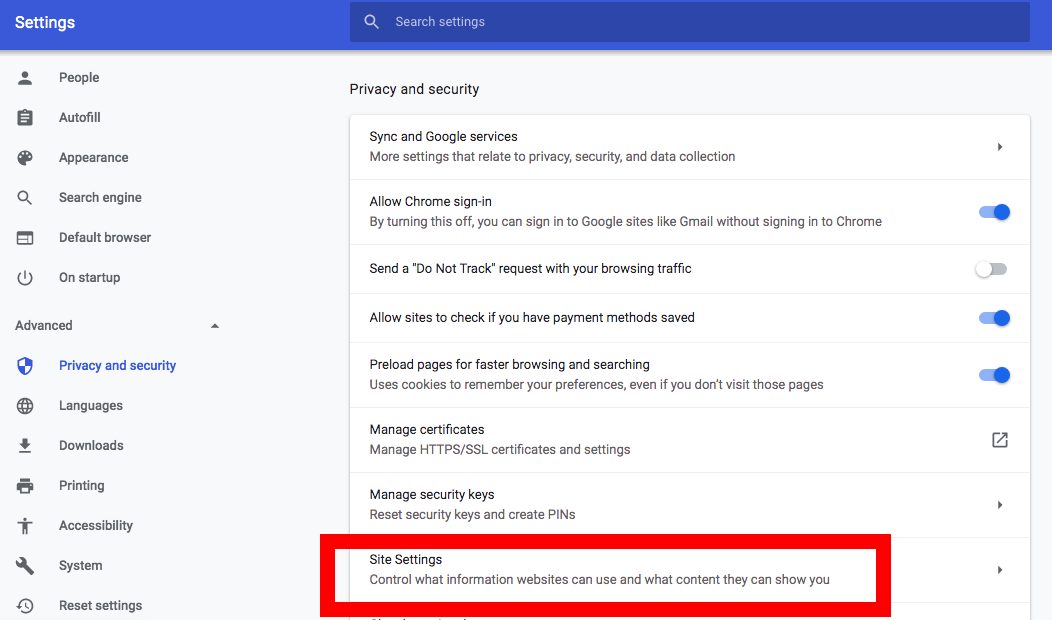How to turn off web notifications for Windows, macOS and Android
No need for notifications? Here's how to unsubscribe

It's a good bet that your web browser allows websites to send you notifications – just like the notifications that pop up on your smartphone.
Web notifications can be pretty handy, since they alert you to breaking news stories or important information from your favourite sites (we make use of notifications here at What Hi-Fi?).
Whenever you visit a website that wants to send you notifications, you'll be greeted with a pop up that asks whether you want to agree to them or not. Your options will be 'allow' or 'block'.
If you're getting notifications, you will have previously pressed the 'allow' button. You may even have done it accidentally or without realising. Switching them off is easy but to help you through the process, we've put together this handy guide.
Here's how to disable notifications for Google Chrome, Firefox, Microsoft Edge and Safari...
How to turn off web notifications in Google Chrome
The first step is to open up Google Chrome on whatever device is receiving the notifications.
In the top right hand corner of the Chrome browser you'll see three vertical dots. Click on them to open up the main menu. Next, select 'Settings' and then scroll down to the bottom where it says 'Advanced'.
Below that is a section that is called 'Privacy and security'. Click it to bring up another sub section called 'Site Settings'. Click that, followed by 'Notifications'. You'll either be able to turn all notifications off by default or toggle which websites you'd like to receive notifications from.
Scroll to the bottom of this page and you'll find a section called 'Allow'. This is a list of all the websites you've allowed to send you notifications. Press on the three vertical dots to the right hand side of the website's name and you'll have the option of blocking notifications, editing them or removing them.
If you choose to block them, you won't be asked by that website to activate notifications whenever you next visit.
'Edit' allows you to change the name of the website while 'Remove' will stop notifications – but you may be asked if you want them again the next time you visit that website.
If you're unsure whether you want notifications or not, we'd recommend choosing the 'remove' option. It should mean you don't receive any notifications on any of your devices anymore (although one or two might pop up while the settings are being finalised).

How to turn web notifications back on
If you've blocked notifications from a website you'll find it listed in the 'block' section at the top of that notifications page.
If you've removed notifications and not blocked them, you can just head to the website again and it's likely you'll be asked if you want to subscribe to them again. Easy.
You can head to any website you know that wants to give you notifications on the desktop version of Chrome and press on the padlock logo that's next to the URL bar on the top left.
Here you'll see a section called 'Notifications' with a drop-down menu next to it that says to either 'ask', 'allow' or 'block' depending on what you want that website to be able to do.

Turn off notifications in Firefox on Mac, Android or PC
If you're a Firefox user, the easiest way to unsubscribe from notifications is to enter the following into the URL box at the top of the web browser: about:preferences#privacy.
This will take you to the preferences in Firefox. Scroll down to 'Permissions', find the option that says 'Notifications' and press the 'Settings' button.
Here you'll find a list of all the websites that can send you notifications along with a status bar that will likely say 'Allow'. Press on this and change it to 'Block' – then hit the 'Save Changes' button in the bottom right corner.
Using Firefox on your phone? You'll need to head to the specific website you want to stop notifications for. You'll see a padlock in the top left hand corner. Press on it and it'll say 'Edit Site Settings'.
You should see an option that says 'Notifications' with a check box on the right hand side. Hit the 'Clear' button at the bottom of this window and you will have unsubscribed successfully.
How to turn off notifications in Microsoft Edge on PC
Access the main menu by pressing on the three dots in the top right corner. Next select the 'Settings' option followed by 'View Advanced Settings'.
This menu will have an option called 'Notifications'. Press that, followed by 'Website Permissions'. Here you'll be able to control what each page can do with your Microsoft Edge browser, and you can revoke access for notifications for each website here.

How to turn off notifications in Safari on Mac
Using Safari? Open up Safari Preferences on your Mac, and hit the 'Websites' option at the top of the screen.
Next, in the list to the left, you'll find an option called 'Notifications'. All the sites you're subscribed to will be listed here. Select 'Allow' or 'Deny' in the drop-down to the right hand side. Once you've selected 'Deny' you can kiss goodbye to Safari notifications.
What about my iPhone or iPad?
You can't currently get Google Chrome notifications through to your iOS devices, so there's nothing to deactivate. Carry on with your life.
MORE:
How to live stream Premier League football and watch in 4K
Get the What Hi-Fi? Newsletter
The latest hi-fi, home cinema and tech news, reviews, buying advice and deals, direct to your inbox.
What Hi-Fi?, founded in 1976, is the world's leading independent guide to buying and owning hi-fi and home entertainment products. Our comprehensive tests help you buy the very best for your money, with our advice sections giving you step-by-step information on how to get even more from your music and movies. Everything is tested by our dedicated team of in-house reviewers in our custom-built test rooms in London, Reading and Bath. Our coveted five-star rating and Awards are recognised all over the world as the ultimate seal of approval, so you can buy with absolute confidence.

